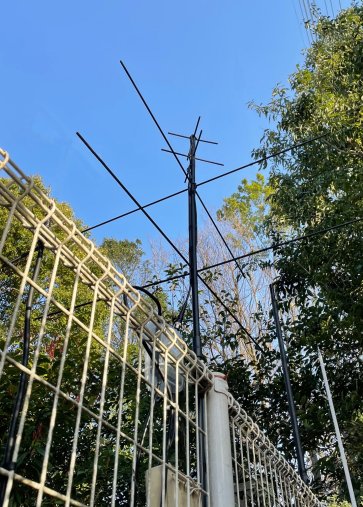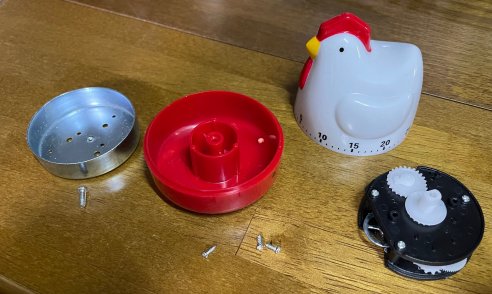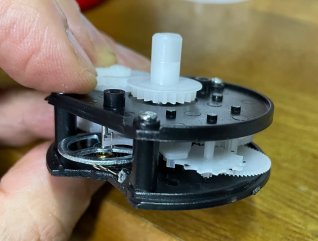=Semi-Automation of 2 elements cross-yagi =
Last time, I found that the “two-element turnstile antenna” was unexpectedly high performance. I thought it was a good idea to combine different types of antennas to use their complementary beam characteristics, but although the turnstile antenna can cover areas that the GP antenna’s directionality does not cover, the turnstile does not strengthen the GP’s transmission.

the 2-element turnstile antenna has pretty sharp beam. The gain is also much higher than that of the GP, and it is light enough to be mounted on a mobile base. “Is there any way to make this track satellites automatically without using a rotator?”
This is where various things begin.
(Part 1) What should I use (to turn it)?
The first thing that came to mind was a “Mainspring”.
But mainsprings were used in so many 20 century toys (and of course they’re still in this 21c., right?) I couldn’t find anything on the internet when I tried to get them. Only to find precision machinery items that cost more than 100US$ each.
The next thing I thought of was a modern idea to use a Raspberry PI to automatically track with a Mabuchi motor and Tamiya gearbox. If you place a Raspberry PI directly under the antenna, you can control the motor via the web from your smartphone, so no cables are needed as long as you’re outside a window with Wi-Fi! But when you think about it, the process is incredible. I don’t know anything about Python or Linux-related terms…
One day, I discovered a “nearly mainspring” for 200 yen at a 100-yen shop.
This is it.

My brain processor started as soon as picking it up until paying at the register.
① A kitchen timer goes around in one revolution, or 360°, and it takes 60 minutes. This is the same for any chicken. At 180°, it’s 30 minutes.
② On the other hand, current low-orbit satellites only take about 15 minutes from AOS (departure) to LOS (arrival). In other words, it takes 15 minutes at an azimuth of 180°.
③ This means that if there is some way to halve the rotation of this chicken, it can be used for automatic satellite tracking!
Having thought about it that far, I would have thought about it more if it had been 2,000 yen, but it is only 200 yen after all. All that’s left to do is buy it, take it apart, and think about it slowly.
It looks something like this. The wheels and axles are just fitted with plastic gears so they’re not very secure, but I’m sure it will work out somehow.

Watching it tick and click, I realized that these 16-tooth gears determine the speed of the clock. (I later found out that this is the heart of the clock, called the escape wheel.)
I used nail clippers to thin out these teeth in half. The result was… a success. I timed it and the timer was ticking at almost twice the speed. I now had a good idea of the fundamental power that would swing the chicken 180 degrees in 15 minutes. However, I initially thought there were 15 teeth and cut one in the wrong place, and the chicken had suffered arrhythmia…
(continued)
→To : Where Have All the Mainsprings Gone?(Part 2)
→Back to INDEX